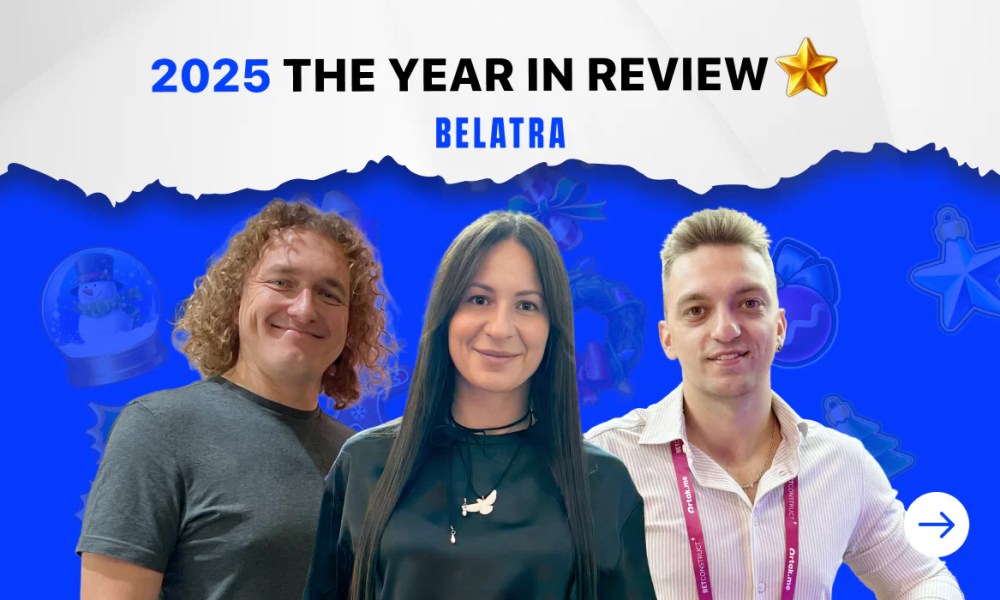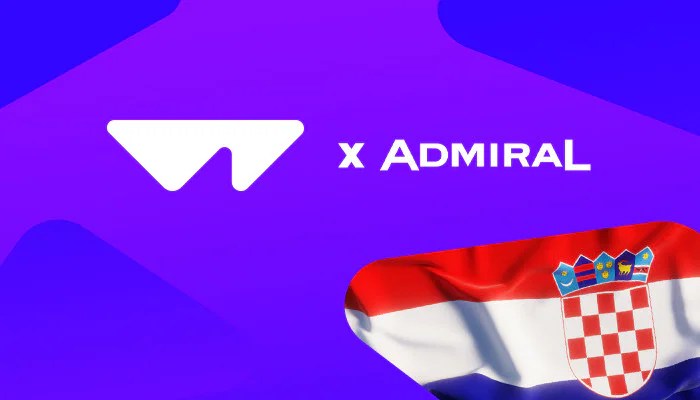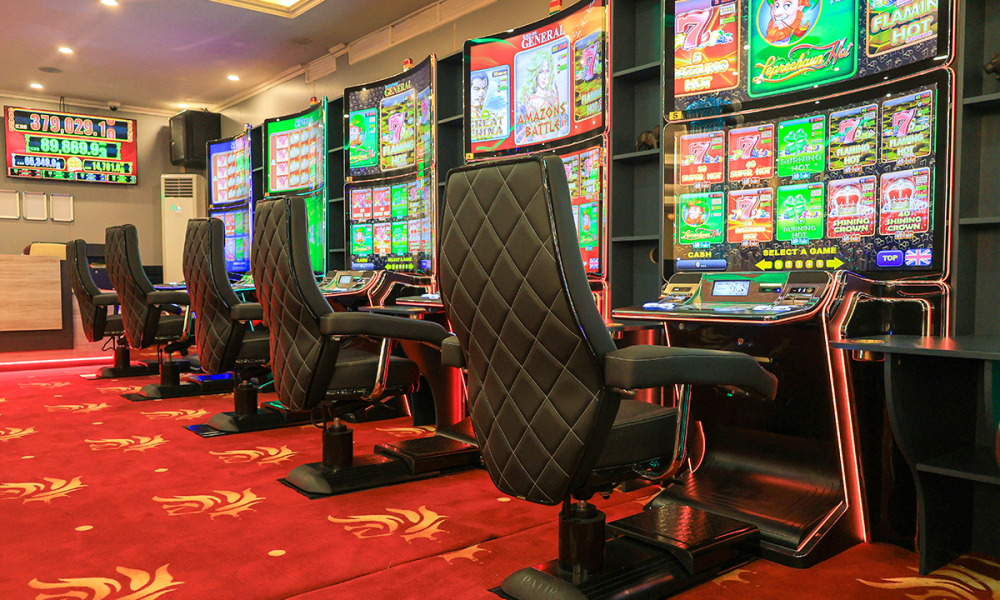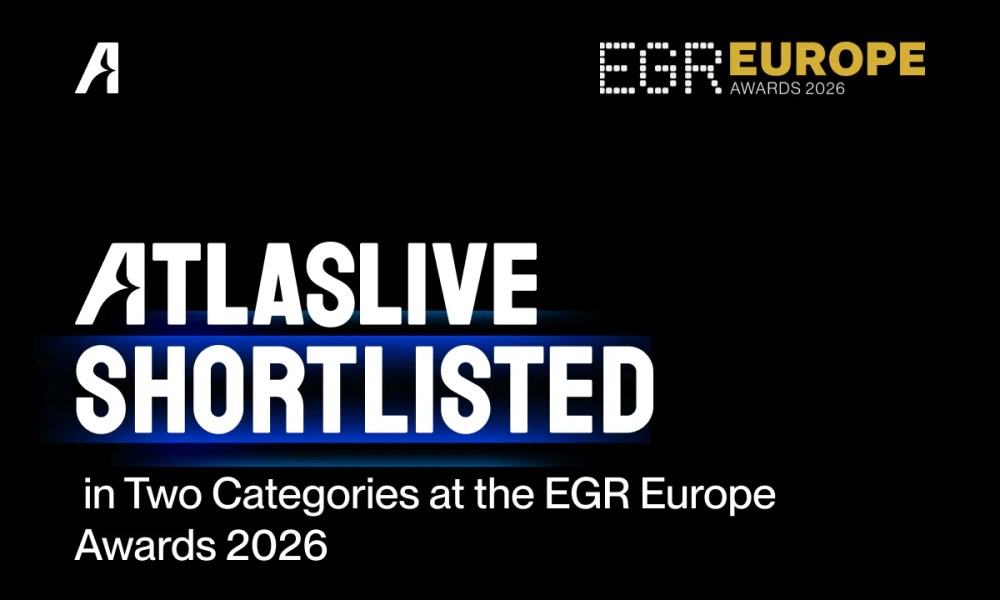Latest News
GROUPE PARTOUCHE: Income 1st half year 2020/2021 – Operating performance impacted by the health issue
During the meeting it held on the 29th of June 2021 and after having reviewed the management report of Groupe Partouche Executive Board, the Supervisory Board examined the audited accounts for the 1st half-year 2020-2021 (November to April).
Operation performance impacted by the health issue
The Covid 19 pandemic penalized the business activity during the first half of the current financial year by the interruption of the Group’s activities over the period, with the exception of the following reopening:
- Djerba casino (Tunisia): open during the 1st half-year but forced into a curfew;
- Meyrin casino (Switzerland): open between the 14th and the 26th December 2020 but on reduced hours;
- Meyrin et de Crans-Montana casinos (Switzerland): reopening on 19th April 2021, without curfew but with health constraints;
- Belgium online gaming & betting: accessible throughout the half-year;
- Switzerland new online gaming: accessible since its launching on 16th November 2020.
The Gross Gaming Revenue (GGR) over the period decreased by -80.9% compared to the previous year, reaching € 50.0 M and the turnover by -74.3% at € 47.2 M.
The Group’s EBITDA fell to -€ 42.0 M, compared to +€ 29.8 M in the first half of 2020.
The current operating income (COI) stood at -€ 73.2 M compared to +€ 0.3 M for the previous year, a degradation directly correlated with the interruption of the activity and therefore of the turnover.
Under activity divisions, the casinos’ COI reached -€ 68.2 M, compared to +€ 6.6 M in 2020 impacted by the closing of all the Group’s casinos over the period, with the exception of the Ostend casino COI with an increase of € 1.1 M thanks to the online COI.
The COI of the hotels’ division slightly decreased to -€ 2.2 M compared to -€ 1.7 M in 2020. The Aquabella hotel at Aix-en-Provence remained open over the whole period with an idling activity while the Cosmos hotel at Contrexéville remained closed.
Lastly, the deficit of COI of the “Other” division improved at -€ 2.8 M on the 1st half-year 2021, compared to -€ 4.7 M in 2020, mainly due to the significant increase of COI of Belgian sports betting (+€ 1,0 M).
Purchases & external expenses decreased by € 7.4 M (-10.9%) mainly impacted by:
- Material purchases, advertising/marketing costs, upkeep and maintenance costs down by € 11.2 M (-69.7%), € 7.9 M (-78.4%) and € 1.4 M (-33.7%) respectively directly linked to the closure of establishments and the drop in revenue from ancillary activities;
- Conversely, the change in subcontracting costs (+€ 16.6 M), mainly linked (i) to the increase in costs associated with online licenses in Belgium, i.e. +€ 19.6 M in costs correlatively to the increase in the turnover of this activity (online casino and sports betting); and (ii) savings in subcontracting (guarding, cleaning) made in view of the closure of establishments.
Within the above development, the increase of +€ 2.0 M in purchases and external expenses relating to the “online casino” in Switzerland, which started on 16th November 2020, should be noted.
Personnel expenses amounted to € 31.5 M, down € 42.0 M (-57.2%) following in particular the allowances received for partial unemployment from which the Group benefits, to which are added the employer’s contributions savings generated as well as the exemptions / subsidiaries obtained as part of the business assistance measures put in place by the Government in response to the health crisis.
The non-current operating income is a net expense of -€ 8.6 M, compared to -€ 2.7 M in 1st half-year 2020. In Belgium, an old dispute was won against the Belgian State leading to a non-current profit of € 5.8 M. Conversely, the continuation of the health crisis led the Group to carry out goodwill additional impairment tests from the half-yearly closing. Thus, goodwill impairment in the first half of 2021 totalled -€ 15.0 M.
In the end, the net income is a loss of € 88.0 M, compared to a loss of € 3.9 M as of 30th April 2020, after taking into account the following elements:
- a financial result of -€ 2.3 M (compared to -€ 0.8 M in 1st half-year 2020), which does not benefit from any exchange gain due to the closure of casinos on both sides of the Franco-Swiss border and whose financial expenses reverse slightly (-€ 0.2 M) in connection with the increase in the Group’s indebtedness while the half-yearly average interest rate continued to decline;
- a significant increase in tax (CVAE included) (-€ 4.0 M compared to -€ 0.6 M in 1st half-year 2020).
The Group’s financial structure remains healthy and solid with “cash net of levies” of € 104.1 M, shareholders’ equity of € 283.2 M and a “net debt” of € 149.7 M (set up as provided by the terms of the syndicated loan agreement, according to the former IAS 17 standard, excluding IFRS 16).
RECENT EVENTS & OUTLOOK
Ratio of leverage
Given the consequences of the health crisis on the Group’s business and the results for the half-year, the calculation of the leverage ratio at 30th April 2021 was impossible due to a negative EBIDTA. However, the Group’s financial partners have renewed their confidence in it.
Thus, the Syndicated Loan Agent, on 9th June 2021, signed a letter on behalf of the Lenders in which the later waives:
- each of the leverage ratio calculations provided for on the two closing dates of 30th April 2021 and 31st October 2021; and
- the delivery of each of the certificates corresponding to the leverage ratio calculations on the above dates.
Likewise, on 15th June 2021, the institutional investor carrying EuroPP waived the same ratio calculations and the delivery of certificates.
Reopening the casinos
All of the casinos in the Group have reopened:
- In France, since 19th May and based on a progressive schedule :
- Starting 19th May: only slot machines and electronic table games were accessible. A gauge equal to 35% of the areas receiving public (ERP) of each establishment had to be respected. Casinos opened until 9:00 p.m. under the curfew and catering was only permitted on the terrace;
- Starting 9th June: opening of table games. The gauge rose to 50% of the ERP capacity, the casinos were open until 11 p.m. and the indoor dining areas were open again, with a limit of six people per table. In addition, the health pass was required in establishments where the operator planned to accommodate more than 1,000 people;
- Starting 20th June: general lifting of the curfew ten days in advance, the other constraints being maintained;
- Starting 30th June: the players are hosted in usual conditions with respect for the health barrier gestures (wearing a mask, physical distancing, etc.).
- In Switzerland, since 19th April, no curfew but some restrictions (10 m² per person, no catering, no smoking even in smoking rooms).
- In Belgium, since 9th June, with an obligation to close at 11:30 p.m.
- In Tunisia, the Djerba casino remained opened during the whole half-year but had to close between the 9th and the 16th May.
Overall, gaming activities have picked up in a very satisfying trend.
Upcoming events:
– 3rd quarter financial information: Wednesday 15th September 2021, after Paris stock market close
– Turnover 4th quarter: Wednesday 15th December 2021, after Paris stock market close
Groupe Partouche was established in 1973 and has grown to become one of the market leaders in Europe in its business sector. Listed on the stock exchange, it operates casinos, a gaming club, hotels, restaurants, spas and golf courses. The Group operates 42 casinos and employs nearly 4,100 people. It is well known for innovating and testing the games of tomorrow, which allows it to be confident about its future, while aiming to strengthen its leading position and continue to enhance its profitability. Groupe Partouche was floated on the stock exchange in 1995, and is listed on Euronext Paris, Compartment
Annex
Consolidated Income
| In €M – At 30th April (6 months) | 2021 | 2020 | ECART | Var. |
| Turnover | 47.2 | 183.6 | (136.4) | -74.3% |
| Purchases & external expenses | (60.6) | (68.0) | 7.4 | -10.9% |
| Tax & duties | (5.6) | (8.8) | 3.1 | -35.6% |
| Employees expenses | (31.5) | (73.6) | 42.0 | -57.2% |
| Depreciation, amortisation & impairment of fixed assets | (28.5) | (29.0) | 0.5 | -1.82% |
| Other current income & operating expenses | 5.9 | (4.0) | 9.9 | -247.4% |
| Current operating income | (73.2) | 0.3 | (73.4) | n/a |
| Other non-current income & operating expenses | 6.4 | 0.0 | 6.4 | – |
| Gain (loss) on the sale of consolidated investments | – | – | – | – |
| Impairment of non-current assets | (15.0) | (2.7) | (12.3) | – |
| Non-current operating income | (8.6) | (2.7) | (5.9) | – |
| Operating income | (81.8) | (2.4) | (79.3) | n/a |
| Financial income | (2.3) | (0.8) | (1.4) | – |
| Income before tax | (84.0) | (3.3) | (80.8) | – |
| Corporate income tax | (3.6) | 1.0 | (4.6) | – |
| CVAE tax | (0.4) | (1.6) | 1.2 | – |
| Income after tax | (88.0) | (3.8) | (84.2) | – |
| Share in earnings of equity-accounted associates | (0.0) | (0.1) | 0.0 | – |
| Total net Income | (88.0) | (3.9) | (84.1) | n/a |
| o/w Group’s share | (81.6) | (5.3) | (76.3) | – |
| EBITDA (*) | (42.0) | 29.8 | (71.8) | n/a |
| Margin EBITDA / Turnover | n/a | 16,2% | n/a |
(*) taking into account the application of IFRS 16 in the half-year, which has the mechanical effect of improving EBITDA by €7.3 M.
Taxes and duties represent an expense of € 5.6 M down by –35.6%.
The change in amortization and depreciation on fixed assets, down -1.82% to € 28.5 M, reflects the slowdown in the sustained investment policy of recent years, hampered by the health crisis.
Other current operating income and expenses represent a net income of € 5.9 M compared to a net expense of € 4.0M in the first half of 2020. This is mainly due to operating grants received or receivable obtained as part of the business subsidiaries measures put in place by the Government in the face of the health crisis, in particular the fixed costs subsidiaries for € 10.0 M.
The operating income stands at -€ 81.8 M against -€ 2.4 M in the first half of 2020.
Income before tax represents a loss of € 84.0 M compared to a loss of € 3.3 M in the first half of 2020.
The tax expense (including CVAE) reached € 4.0 M, compared with € 0.6 M in the first half of 2020. The exceptional income recorded in Belgium following a dispute amounts to a tax of € 1.3 M. Conversely, CVAE’s tax charge decreased due to the shutdown of the Group’s activity over the half-year. With regard to deferred taxes, the Group has adopted the cautious position of not activating, even partially, the tax losses related to tax consolidation generated over the half-year (against a deferred tax asset of +€ 1.8 M during the 1st half-year 2020).
The quota-share of earnings of equity-accounted associate remained stable and non-material.
The consolidated net Income over the half-year is a loss of € 88.0 M against a loss of € 3.9 M at 30th April 2020, of which the Group share represents a loss of € 81.6 M compared to a loss of € 5.3 M at 30th April 2020.
Balance Sheet
Total net assets at 30th April 2021 decreased, totalling € 753.7 M against € 787.7 M at 31st October 2020. The remarkable developments during the period under review are as follows:
- A decrease in non-current assets of € 35.2 M mainly due, on the one hand, to the decrease in the “tangible fixed assets” item to the tune of -€ 17.5 M resulting from the depreciation expense for the half-year combined with the contraction in investments, and on the other hand, the decrease in the “goodwill” item for € 15.0 M, linked to the depreciation in the half-year of goodwill of certain sensitive CGUs in this crisis context;
- An increase in current assets of € 1.3 M, mainly due to an increase in the “receivables and other debtors” item of € 12.1 M (of which an increase of € 3.3 M in receivables from social organizations due to partial unemployment indemnities receivable in the context of the Covid-19 crisis, and € 9.4 M in subsidies receivable for fixed-cost assistance); as well as “Other current assets” of € 2.3 M (in particular VAT receivables). Conversely, we note a cash consumption of € 13.2 M.
On the liabilities side, shareholders’ equity including minority interests fell from € 371.9 M as of 31st October 2020 to € 283.2 M as of 30th April 2021, weighed down by the net result for the half-year. Financial debt increased by €53.7M. Consideration should be given to:
- the subscription, in mid-April 2021, of a second loan guaranteed by the State for € 59.5 M and new bank loans for + € 4.5 M;
- the quarterly maturity of the syndicated loan settled on 30th April 2021 in the amount of -€ 2.7 M, the maturity of 31st January 2021 having been postponed to 2026, as well as the repayment of other bank loans for -€ 1.9 M;
- the postponement of the 12-month maturities (in capital and, for the most part, in interest) of the Group’s bank debts, the resumption of repayments having taken place for some in March but for the majority in April 2021.
In addition, it should be noted that, due to the negative EBIDTA induced by the closure of the Group’s establishments over the half-year, the institutional investor carrying the EuroPP as well as all the banks making up the banking pool of the syndicated loan have given up the calculation of the leverage ratio provided for on the closing date of 30th April 2021. This with a retroactive effect from 30th April 30, 2021. However, the waiver having taken place after the closing, the application of IAS 1 has forced the Group to restate all of the outstanding amounts relating to the bond loan and the syndicated loan as a current share this half-year.
Financial structure – Summary of net debt
One can consider the Group’s financial structure using the following table (set up as provided by the terms of the syndicated loan contract, according to the old IAS 17 standard, excluding IFRS 16):
| In €M | 30/04/2021 | 31/10/2020 | 30/04/2020 |
| Equity | 283.2 | 371.9 | 384.1 |
| Gross debt (*) | 253.7 | 194.7 | 168.8 |
| Cash less gaming levies | 104.1 | 103.1 | 78.9 |
| Net debt | 149.7 | 91.5 | 89.9 |
| Ratio Net debt / Equity (« gearing ») | 0.5x | 0.2x | 0.2x |
| Ratio Net debt / Consolidated EBITDA (« leverage ») (**) | N/A (***) | 2.3x | 1.7x |
(*)The gross deb includes bank borrowings, bond loans and restated leases (with the exception of old leases restated according to the new IFRS 16 standard), accrued interest, miscellaneous loans and financial debts, bank loans and financial instruments.
(**) The EBITDA used to determine the “leverage” is calculated over a rolling 12-month period, according to the old IAS 17 standard (that is to say before application of IFRS 16), at namely € 39.8 M at 31/10/2020, and € 54.3 M at 30/04/2020.
(***)The bond and banking partners have waived the calculation of the “leverage ratio” expected at the closing date of 30th April 2021 due to negative EBITDA over the period.
Glossary
The “Gross Gaming Revenue” corresponds to the sum of the various operated games, after deduction of the payment of the winnings to the players. This amount is debited of the “levies” (i.e. tax to the State, the city halls, CSG, CRDS).
The «Gross Gaming Revenue» after deduction of the levies, becomes the “Net Gaming Revenue “, a component of the turnover.
“Current Operating Income” COI includes all the expenses and income directly related to the Group’s activities to the extent that these elements are recurrent, usual in the operating cycle or that they result from specific events or decisions pertaining to the Group’s activities.
Consolidated EBITDA is made up of the balance of income and expenses of the current operating income, excluding depreciation (allocations and reversals) and provisions (allocations and reversals) linked the Group’ business activity included in the current operating income but excluded from Ebitda due to their non-recurring nature.

Latest News
From ‘Mummyverse’ to Crash Games: Belatra Reviews a Landmark 2025
Editor’s Take
Why this matters: Belatra has been a steady hand in the slots world for a long time, but 2025 marked a distinct shift in strategy. By entering the Crash vertical with Goose Boom Bang and winning big at SiGMA Africa, the studio is clearly pivoting to capture the high-growth, high-frequency players in emerging markets. They are no longer just a “classic slots” developer; they are diversifying the portfolio to ensure relevance in regions like LatAm and Africa.
The Full Story
Belatra Games, the specialist online slots developer, has issued a strategic review of its 2025 operations, celebrating a 12-month period defined by entry into new game verticals, significant franchise expansion, and high-profile industry recognition.
The year was characterized by a dual strategy: deepening engagement in established markets while aggressively expanding its content portfolio to suit local preferences in emerging territories.
Portfolio Evolution: Crash and Battles 2025 saw Belatra move beyond its traditional slot roots. The company made its debut in the high-demand Crash game vertical with the launch of Goose Boom Bang, a title designed to tap into the fast-paced gameplay preference of younger demographics.
Additionally, the studio introduced a fresh game concept with the launch of Battles, a new format unveiled for the first time in 2025, with further development planned for 2026.
The ‘Mummyverse’ Expands For fans of classic slots, the highlight of the year was the aggressive expansion of the Mummyverse. Belatra nearly doubled the size of this franchise over the year, making it the most extensive game universe in their entire catalog.
The developer also focused on B2B localization, releasing a number of exclusive bespoke games created specifically for selected operator partners to meet specific local market tastes.
Awards and Recognition The company’s strategic shifts were validated by industry accolades. Belatra secured over 30 nominations throughout the year, with standout wins including:
-
Best Slot Provider (awarded by BitStarz).
-
Most Played Game of 2025 for Make It Gold at the SiGMA Africa Awards.
-
Player’s Pick Award.
Management Commentary Misha Voinich, Head of Business Development at Belatra, commented on the studio’s momentum:
“This year has truly defined who we are as a studio – ambitious, creative and focused on building long-term partnerships. We’ve expanded our universes, launched new ones and entered exciting new markets that will all help us carry this momentum into the New Year.”
The post From ‘Mummyverse’ to Crash Games: Belatra Reviews a Landmark 2025 appeared first on Gaming and Gambling Industry Newsroom.
Latest News
‘Chaos and Soul’: Ebaka Games Plots Global Expansion After Viral Launch
Editor’s Take
Why this matters: The “Instant Game” vertical (Crash, Plinko, Mines) is becoming crowded, but Ebaka Games is cutting through the noise with a distinct brand personality. By securing BMM Testlabs certification so quickly after launch, they are signaling to Tier 1 operators that despite their “chaotic” marketing vibe, the math underneath is solid and compliant. The backing of industry veteran Dmitry Belianin also adds immediate commercial credibility to the startup.
The Full Story
Ebaka Games, the fledgling studio that promises to bring “chaos and soul” to the iGaming sector, has outlined an aggressive growth strategy for 2026 following a landmark launch period in late 2025.
The studio, which officially debuted in November, reports that its initial rollout reached more than five million people worldwide. The launch saw its portfolio go live with the operator Menace, serving as the initial testbed for its mechanics and “Ebaka modes.”
The Product: Instant Games with Personality Ebaka is bypassing traditional slots to focus on the high-growth vertical of fast-paced, instant-win games. Their initial lineup includes:
-
Plinko
-
Mines
-
Tower
-
Limbo
-
Crash
Differentiation is achieved through unique mascots and signature gameplay tweaks designed to offer high win potential and distinct visual identities, moving away from the generic interfaces often found in this genre.
Regulatory Milestone Crucially for its 2026 roadmap, Ebaka Games has confirmed it has secured certification from BMM Testlabs. This accreditation validates the fairness and integrity of its RNG (Random Number Generator) and game engines, removing a major barrier to entry for regulated markets. With this certification in hand, the studio plans to launch with a number of “major brands” in the coming year.
Management Commentary Vitalii Zalievskyi, CEO of Ebaka Games, commented on the studio’s unorthodox approach:
“It’s only been a few weeks since we first introduced Ebaka Games to the world. The feedback has been breathtaking, and it vindicates the decision for us to take a different path to the rest of the industry. You don’t need huge marketing budgets to grab people’s attention if you are building something truly innovative.”
Industry Backing The studio describes itself as being “created by players for players” but boasts significant industry firepower in its corner. The team includes Dmitry Belianin, a well-known figure in the sector who is the co-founder of Blask and Menace, as well as Managing Partner at Already Media.
The post ‘Chaos and Soul’: Ebaka Games Plots Global Expansion After Viral Launch appeared first on Gaming and Gambling Industry Newsroom.
Latest News
Racing Meets Nightlife: SBK Backs ARC’s New ‘Friday Night Live’ Series
Editor’s Take
Why this matters: British racing has a well-documented demographic problem; its core audience is aging. “Friday Night Live” is a direct attempt to fix this by blending high-stakes racing with the “experience economy” (DJs, nightlife vibes) that appeals to Gen Z and Millennials. Bringing SBK on board—a mobile-first, app-only sportsbook—is a perfect demographic fit, while the Racing Post adds the necessary credibility to ensure the actual racing product remains the focus.
The Full Story
Arena Racing Company (ARC) has unveiled the strategic commercial lineup for its upcoming Friday Night Live series, confirming SBK as the Exclusive Betting Partner and The Racing Post as the Official Media Partner.
Set to launch in January 2026, Friday Night Live is a new initiative created in collaboration with youth-focused events company INVADES. The series is designed to overhaul the traditional race day experience, featuring fast-paced fixtures under floodlights, DJ sets, and significant entertainment elements sandwiched between races.
The Commercial Deal
-
SBK: As the exclusive betting partner, the Smarkets-owned sportsbook will take naming rights and on-course branding for all 35 races. Crucially, these races will be broadcast live on mainstream television via ITV Racing as well as Sky Sports Research.
-
The Racing Post: As the Official Media Partner, the publication will provide content, coverage, and promotion across its digital platforms, aiming to bridge the gap between established racing purists and the new audience ARC hopes to attract.
A High-Stakes Experiment The series is not just a marketing exercise; it carries serious sporting weight. Each of the five scheduled nights will feature over £200,000 in prize money. The fixtures will rotate across three of ARC’s all-weather tracks: Wolverhampton, Newcastle, and Southwell.
Management Commentary David Leyden Dunbar, Group Director of Commercial Strategy at ARC, was clear about the target audience:
“We have been very clear that one of the aims of Friday Night Live is to engage the next generation of racing fans… Both [partners] have shown real enthusiasm to work with us… as well as using the platform that these fixtures will offer them to also engage with more established racing and sports fans.”
Adam Baylis, Marketing Director at SBK, added:
“Friday Night Live [is] a fresh and engaging concept that brings a new energy to British racing. SBK has always been built around sport… our focus is on enhancing the live race day experience in a fun, social and responsible way.”
The 2026 Schedule The series kicks off immediately in the new year:
-
9th Jan: Wolverhampton
-
6th Feb: Newcastle
-
20th Feb: Southwell
-
20th March: Wolverhampton
-
27th March: Newcastle
The post Racing Meets Nightlife: SBK Backs ARC’s New ‘Friday Night Live’ Series appeared first on Gaming and Gambling Industry Newsroom.
-

 Latest News2 weeks ago
Latest News2 weeks agoSCCG Announces Strategic Partnership with Yellow Elephant Studios to Expand Multi-Channel Gaming Content Worldwide
-
Latest News2 months ago
JioBLAST Launches All Stars vs India powered by Campa Energy: A New Era of Creator-Driven Esports Entertainment
-
eSports1 month ago
CS:GO Betting Gains Momentum in the iGaming Sector
-
Latest News3 weeks ago
THE 2025 PUBG MOBILE GLOBAL CHAMPIONSHIP GROUP STAGE WRAPS UP WITH LAST CHANCE IN SIGHT
-
Latest News1 month ago
S8UL Esports acquires Team Elite’s Free Fire MAX roster to form S8UL Elite
-
Latest News2 months ago
RocketPlay wins Best Customer Service at European iGaming Excellence Awards
-
Latest News2 months ago
Kambi Group plc Q3 2025 Report
-
Latest News3 months ago
GGPoker Unveils Massive Weekly $100K Freeroll, Kicking Off October 18













You must be logged in to post a comment Login